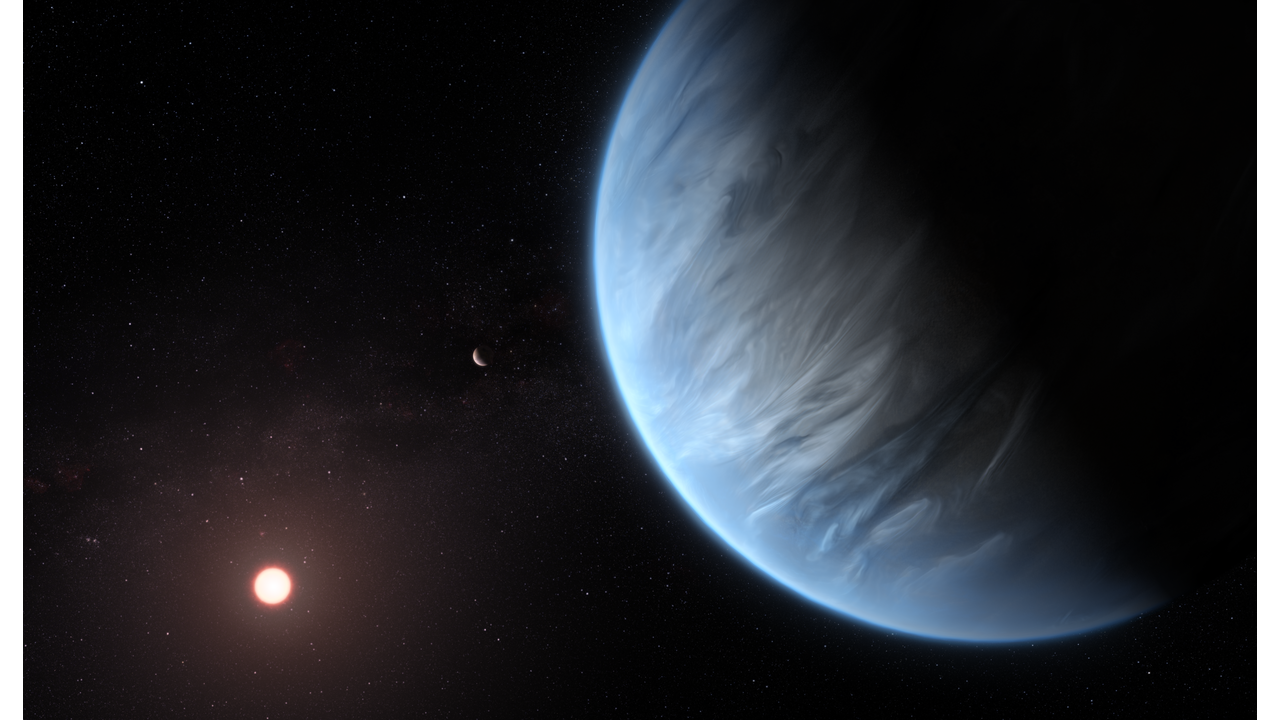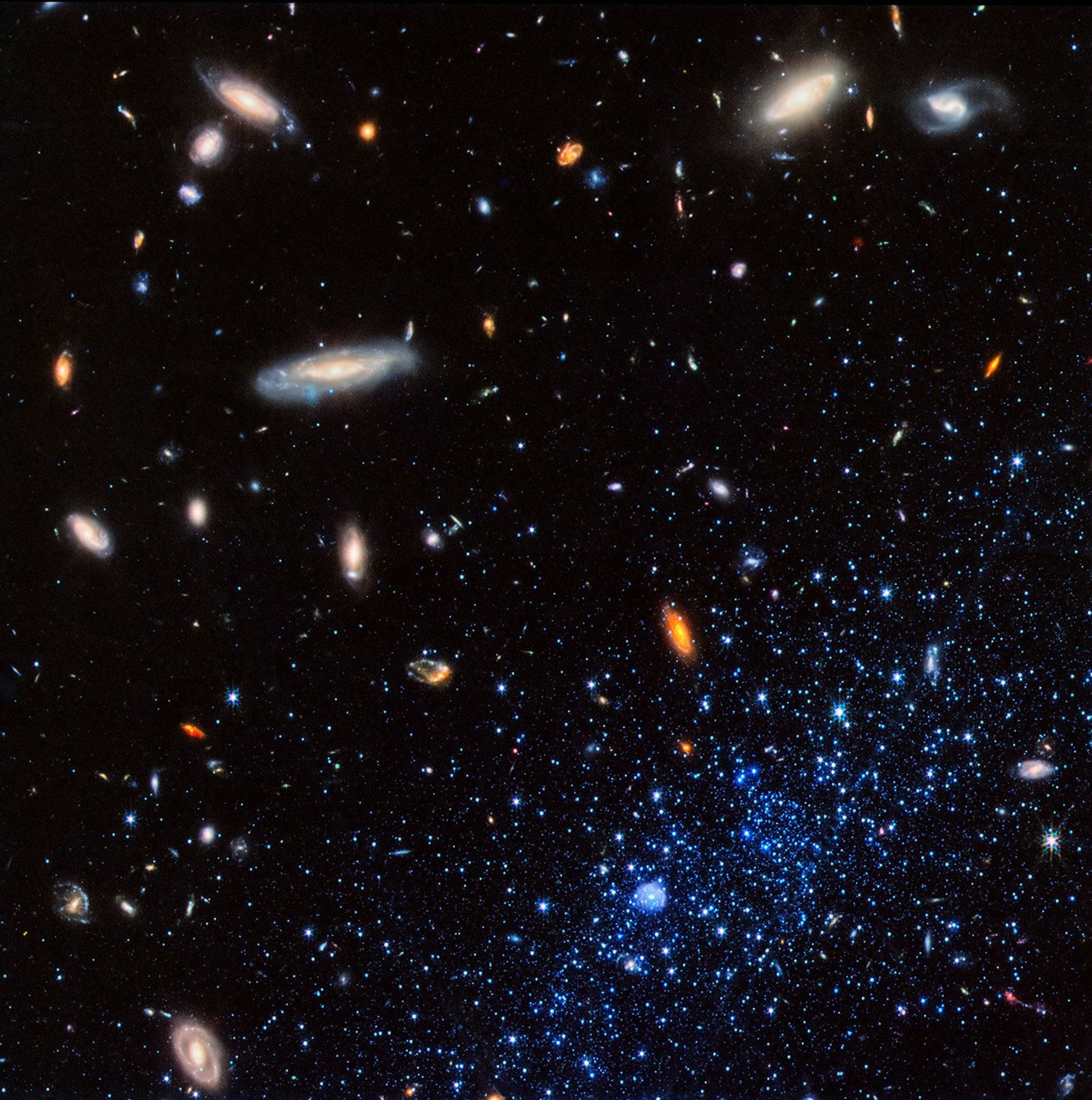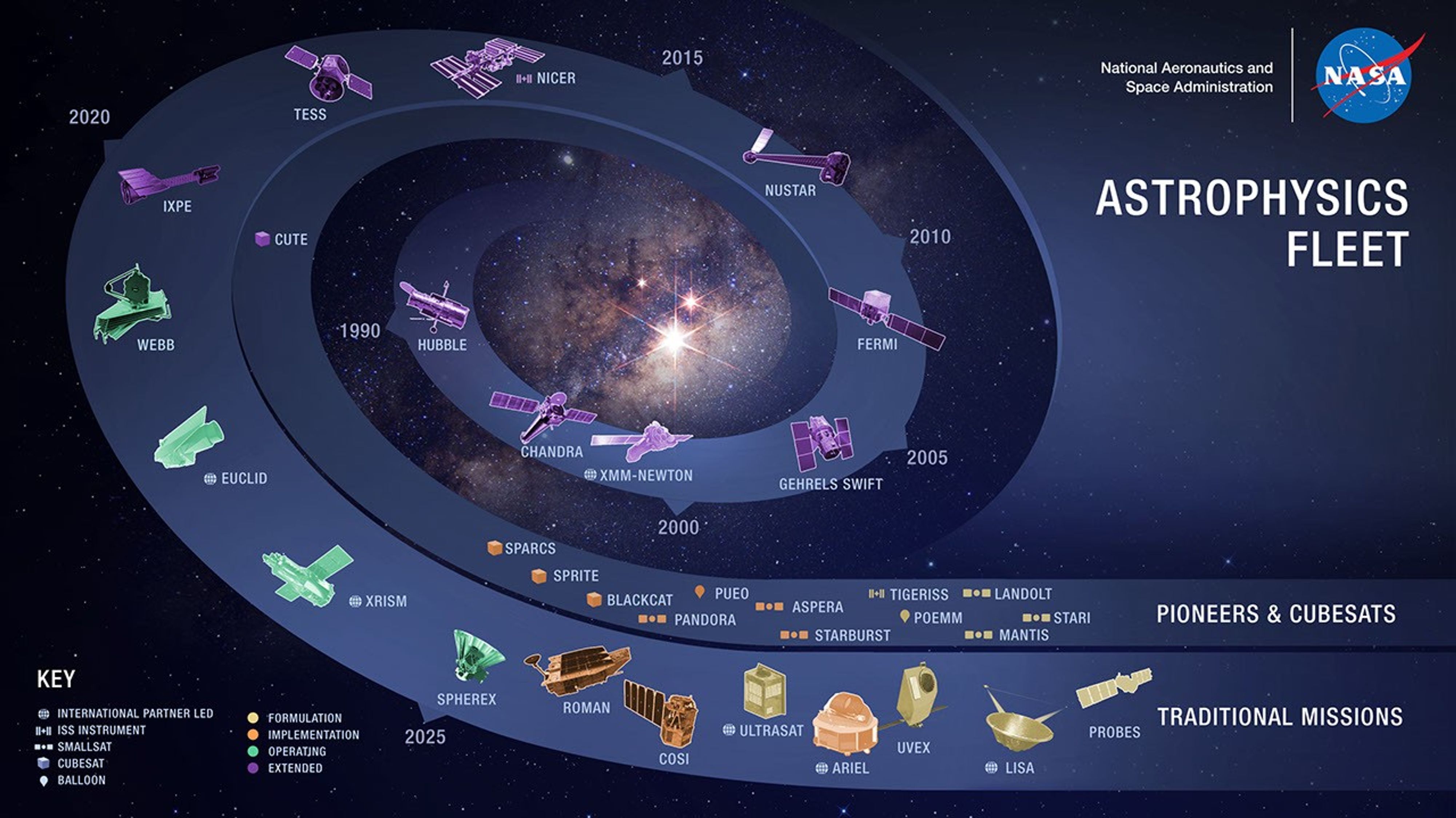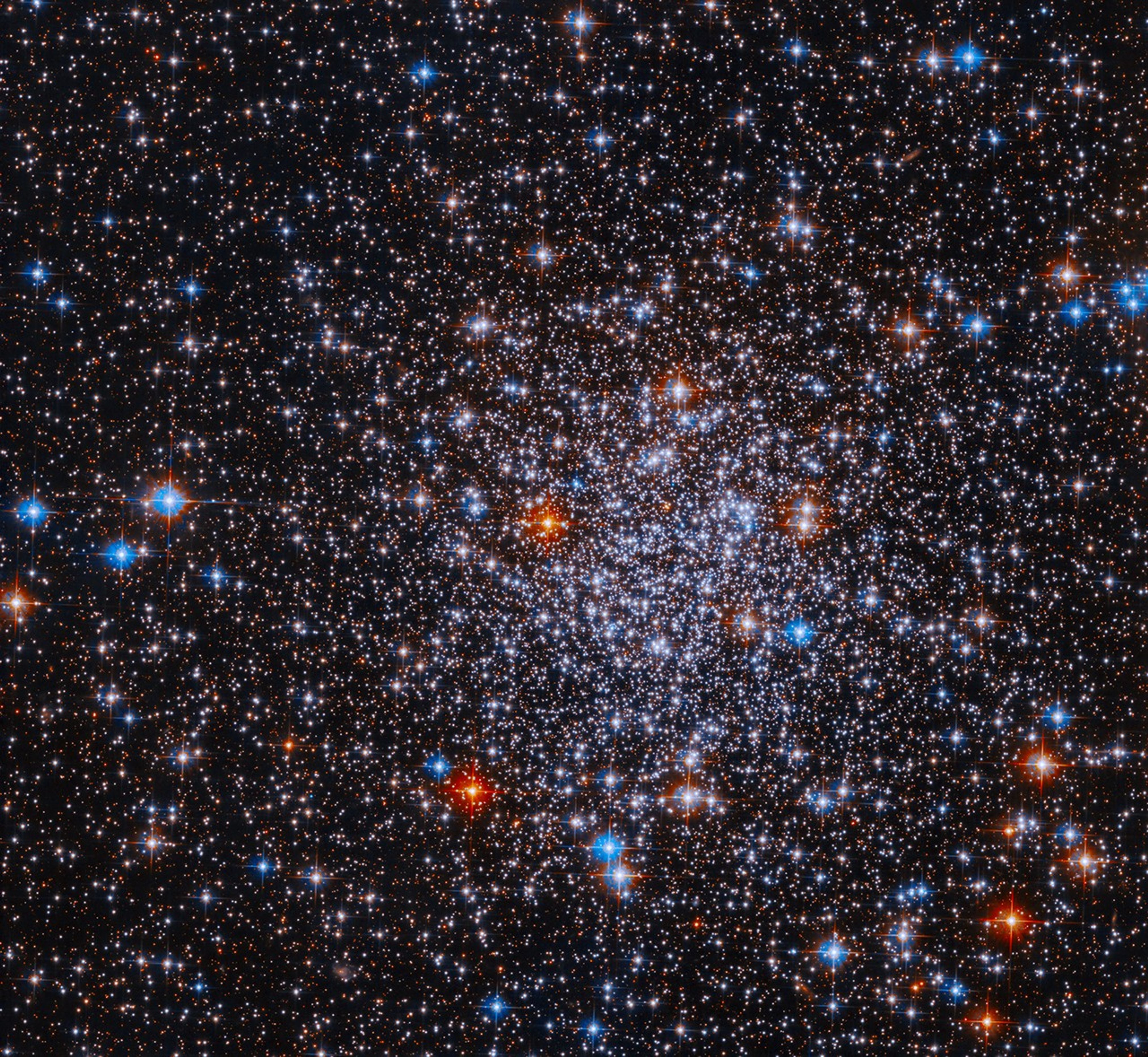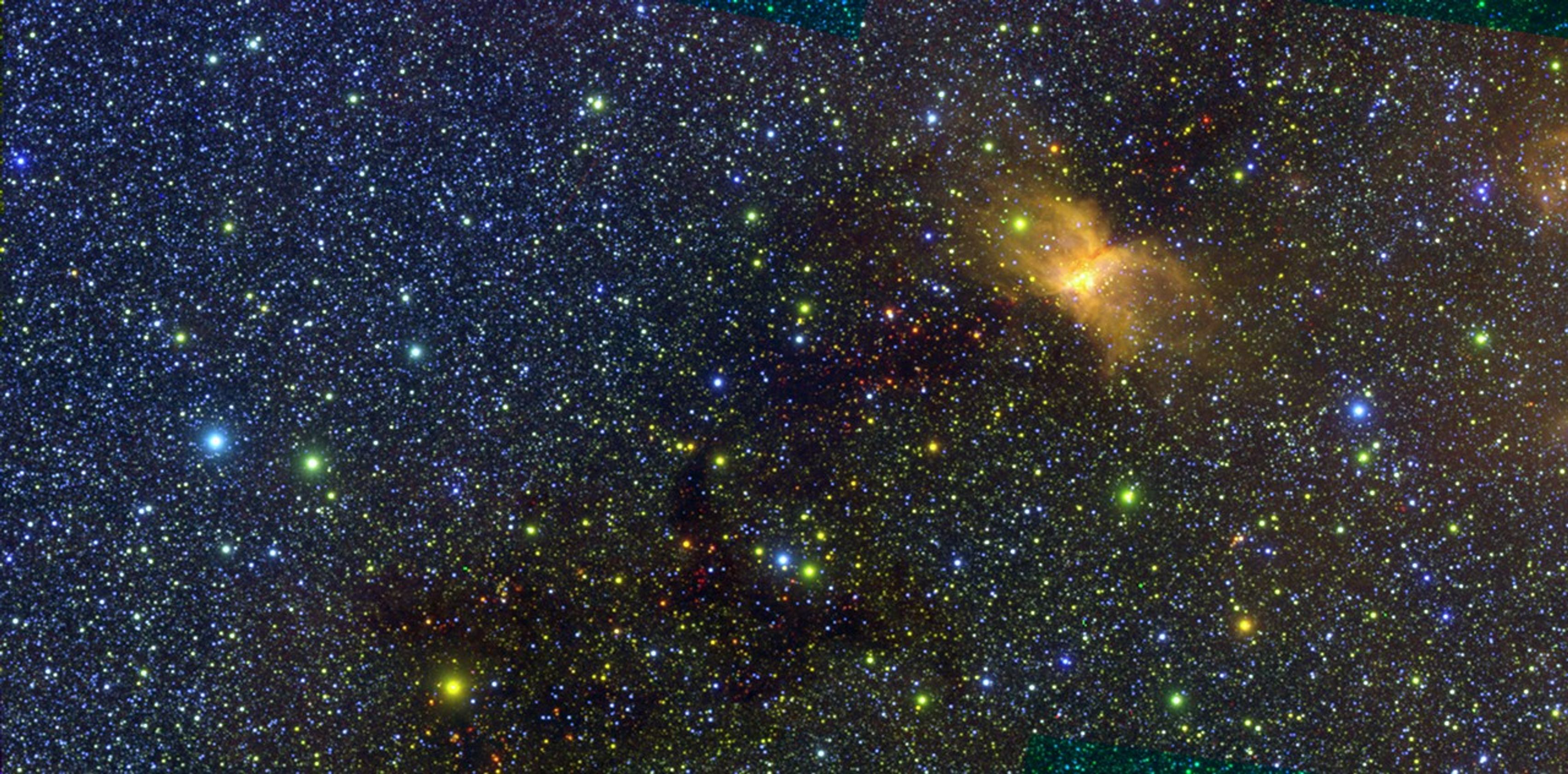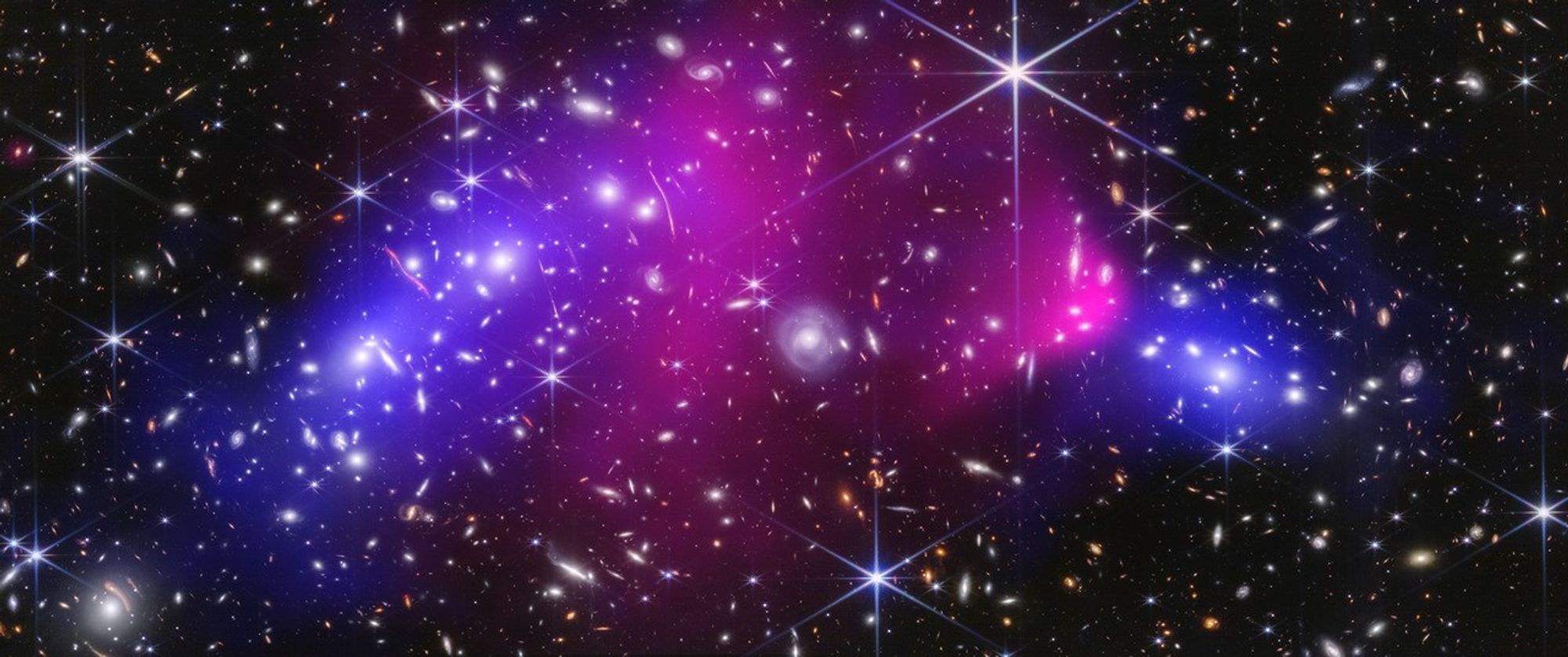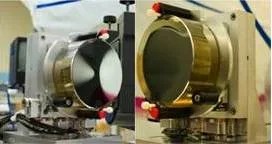The universe is everything. It includes all of space, matter, energy, time, and you.
NASA’s Astrophysics Division is dedicated to exploring the universe, pushing the boundaries of what is known of the cosmos, and sharing its discoveries with the world. The Division continues expanding humanity’s understanding of how the universe began and evolved, how it works, and whether there are places beyond Earth where life might thrive. By working together with collaborators and academic partners from all over the world, NASA researchers are making progress towards addressing the tantalizing questions below with leading-edge technologies and groundbreaking science.
Current Programs
At NASA, a Program refers to one or more coordinated efforts of space exploration, Astrophysics comprises of three focused and two cross-cutting Programs. These focused Programs provide an intellectual framework for advancing science and conducting strategic planning.
Current Missions
The Astrophysics current missions include two of the Great Observatories originally planned in the 1980s and launched over the past 30 years. The current suite of operational missions includes the Hubble Space Telescope, the Chandra X-ray Observatory, and the James Webb Space Telescope. Additionally, the Fermi Gamma-ray Space Telescope explores the high-energy end of the spectrum. Innovative Explorer missions, such as the Neil Gehrels Swift Observatory, NuSTAR, TESS, and IXPE, as well as NICER, complement the Astrophysics strategic missions. SOFIA, an airborne observatory for infrared astronomy, is in its extended mission phase is GUSTO (Galactic/ Extragalactic ULDB Spectroscopic Terahertz Observatory) with its mission to measure emissions from the interstellar medium to help scientists determine the life cycle of interstellar gas in our Milky Way, witness the formation and destruction of star-forming clouds, and understand the dynamics and gas flow in the vicinity of the center of our galaxy. All of the missions together account for much of humanity's accumulated knowledge of the heavens. Many of these missions have achieved their prime science goals but continue to produce spectacular results in their extended operations.
NASA-funded investigators also participate in observations, data analysis and developed instruments for the astrophysics missions of our international partners, including ESA's XMM-Newton. Along with these international missions, ESA's Euclid mission which will fly NASA furnished detectors and JAXA's XRISM (X-Ray Imaging and Spectroscopy) mission which uses NASA furnished technologies that will help provide breakthroughs in the study of structure formation of the universe, outflows from galaxy nuclei, and dark matter.
Near Future
The near future will be dominated by several missions.
The SPHEREx mission will launch in 2025. The Spectro-Photometer for the History of the Universe, Epoch of Reionization and Ices Explorer (SPHEREx) mission will provide the first all-sky spectral survey. Over a two-year planned mission, the SPHEREx Observatory will collect data on more than 450 million galaxies along with more than 100 million stars in the Milky Way to explore the origins of the universe.
In 2027 NASA will launch the Nancy Grace Roman Space Telescope. Roman will aid researchers in their efforts to unravel the secrets of dark energy and dark matter, and explore the evolution of the cosmos. It will also discover new worlds outside our solar system and advance the search for worlds that could be suitable for life.
In October 2021, NASA selected a new Explorer Mission, the gamma-ray telescope COSI (Compton Spectrometer and Imager). COSI will study the recent history of star birth, star death, and the formation of chemical elements in the Milky Way. COSI is also planned to launch in 2027.
The Future
Since the 2001 decadal survey, the way the universe is viewed has changed dramatically. More than 3800 planets have been discovered orbiting distant stars. Black holes are now known to be present at the center of most galaxies, including the Milky Way galaxy. The age, size and shape of the universe have been mapped based on the primordial radiation left by the big bang. And it has been learned that most of the matter in the universe is dark and invisible, and the universe is not only expanding, but accelerating in an unexpected way.
For the long-term future, the Astrophysics goals will be guided based on the results of the 2020 Decadal survey Pathways to Discovery in Astronomy and Astrophysics for the 2020s. It identifies the most compelling science goals and presents an ambitious program of ground- and space-based activities for future investment. The report recommends critical near-term actions to support the foundations of the profession as well as the technologies and tools needed to carry out the science.
Featured Missions
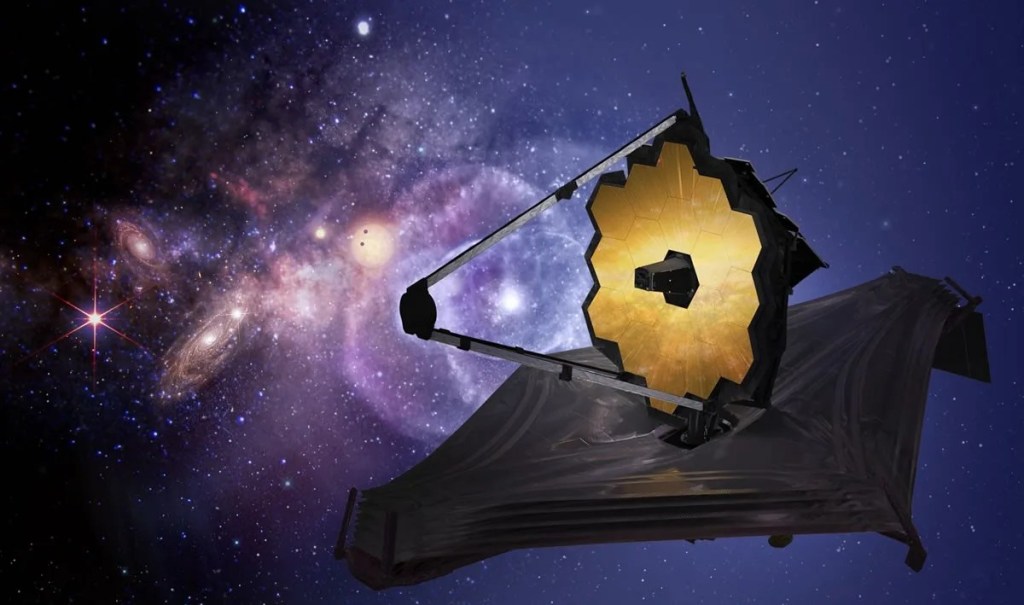
James Webb Space Telescope
Webb is celebrating one year of incredible discoveries, from exoplanets to the early Universe.
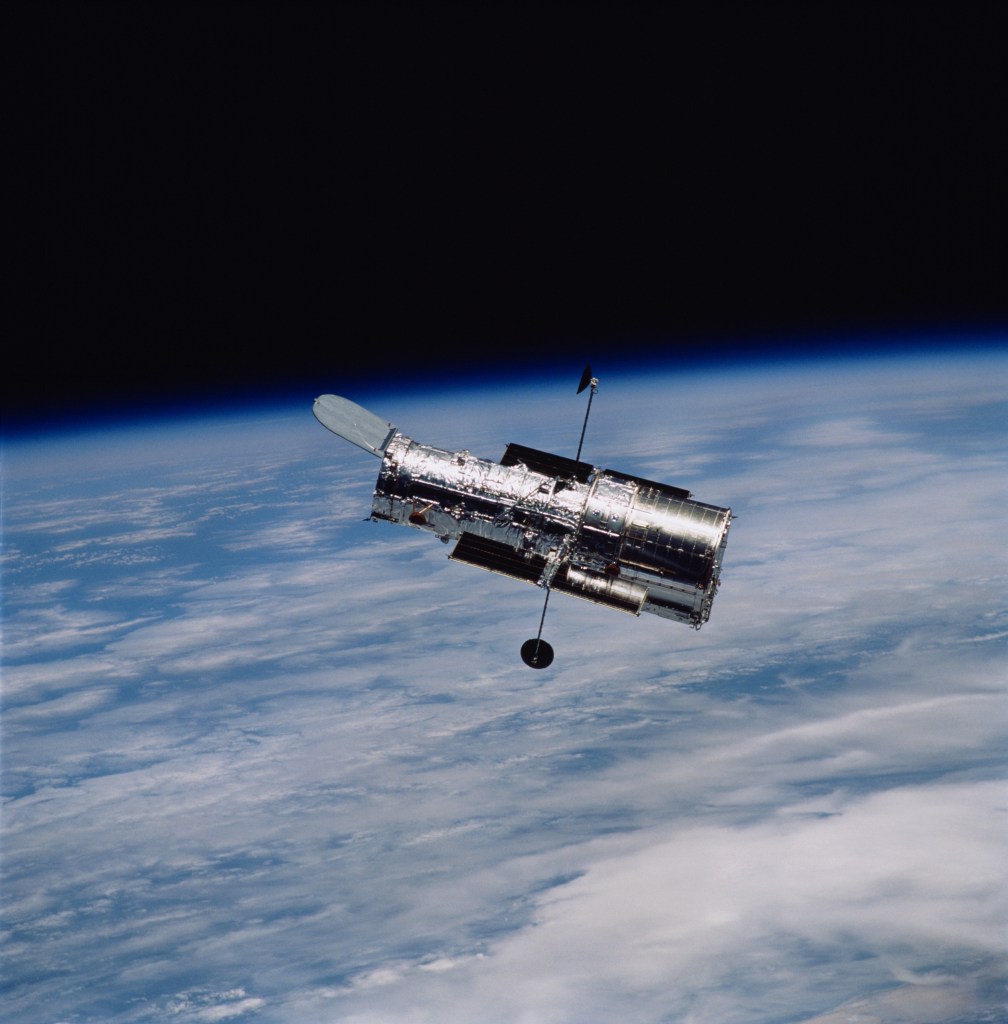
Hubble Space Telescope
Since its 1990 launch, the Hubble Space Telescope has changed our fundamental understanding of the universe.
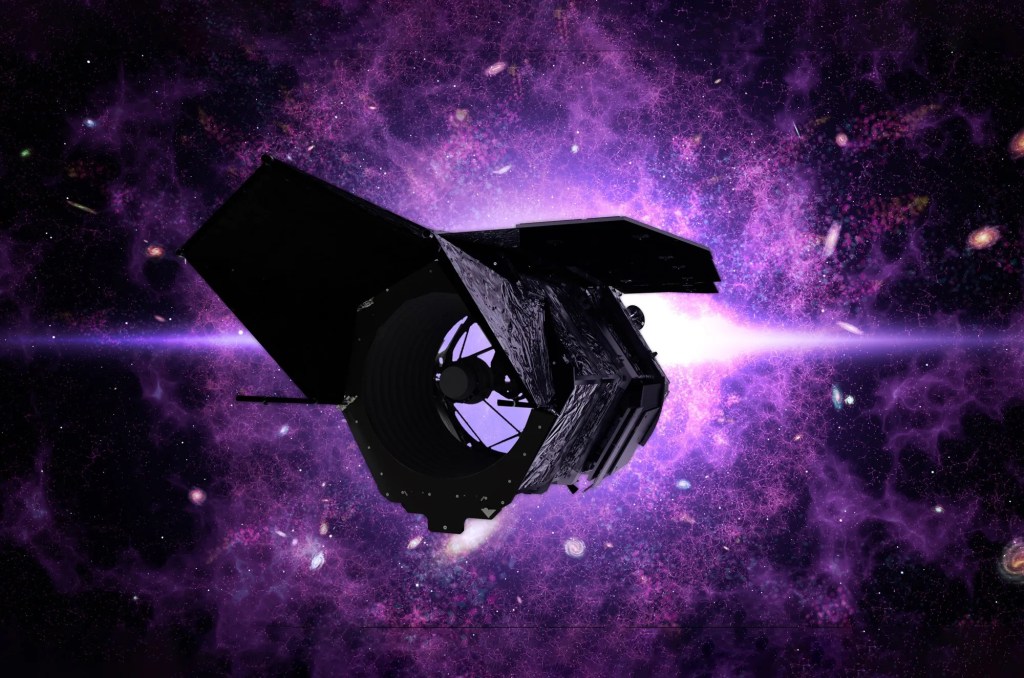
Roman Space Telescope
Roman is designed to settle essential questions in the areas of dark energy, exoplanets, and infrared astrophysics.
Decadal Survey on Astronomy and Astrophysics 2020 (Astro2020)
The National Academies have completed their work on the 2020 Decadal Survey on Astronomy and Astrophysics.
Please visit the National Academies Decadal Survey on Astronomy and Astrophysics 2020 web page for additional information about the survey and their published documents on the topic.
Learn More about Decadal Survey on Astronomy and Astrophysics 2020 (Astro2020)





























